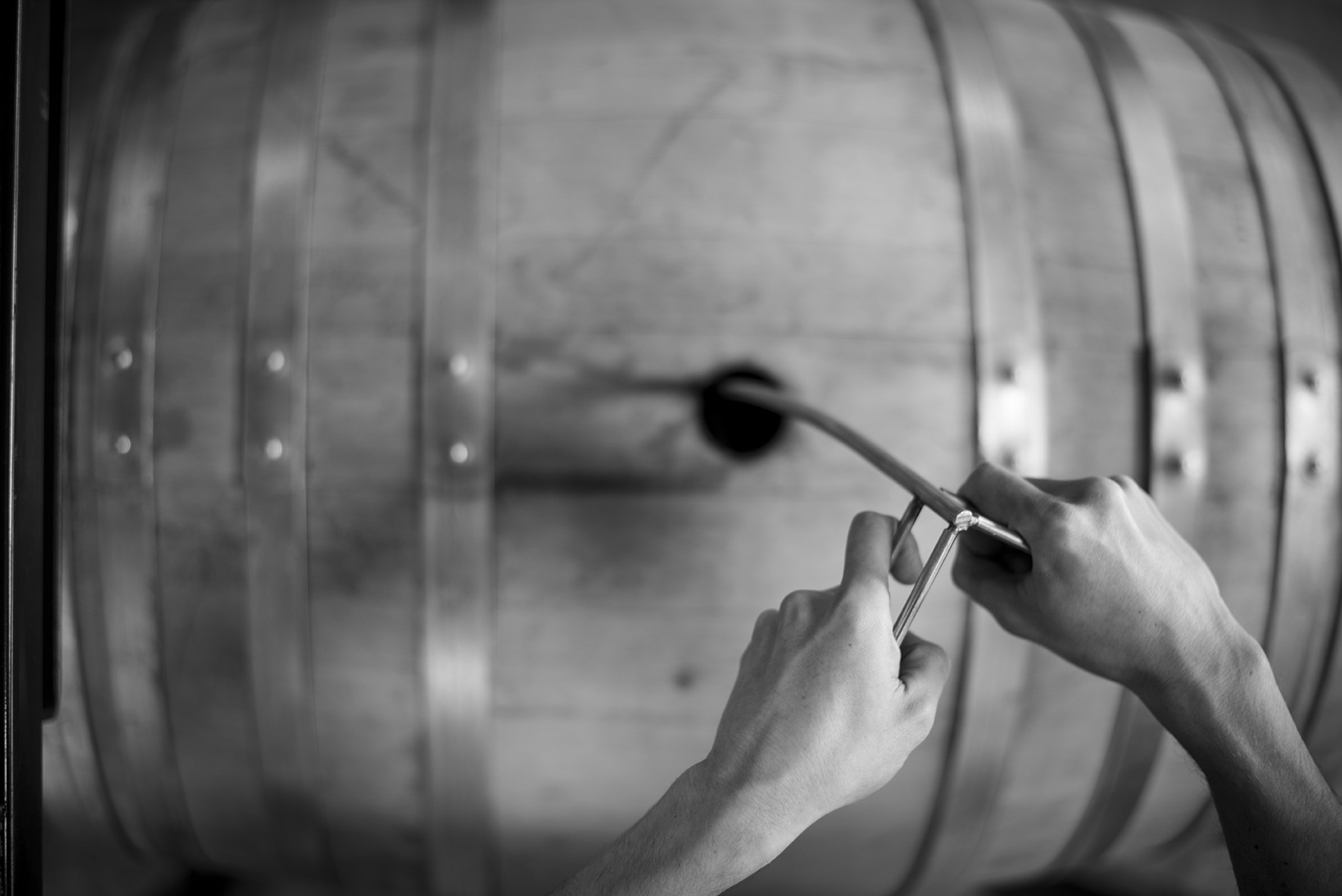Tradition Meets Innovation: Crafting a New Style of Burgundian-Inspired Chardonnay

We have always felt the wine world benefits from having multiple styles of Chardonnay to choose from. Styles ranging from the super lean, stainless steel Chardonnays of Sonoma Coast to layered, textured expressions in the Burgundian style.
At Occasio Winery, we’ve always leaned towards the silky texture and alluring aromas of a classic Burgundian Chardonnay. However, there is one taste typical of this style that we try hard to minimize – the pronounced buttered popcorn flavors found in many of today’s wines. Don’t get us wrong, a hint of butter can be delicious. But if too much dominates the palate it can mask the subtle complexity we prefer in our Chardonnay.
For years, we experimented with ways to tone down the butter, trying to make it a background player rather than the main event. As a start, we began selecting malolactic bacteria strains known for lower diacetyl production. Diacetyl is the compound responsible for the buttery taste. While this helped, we still aimed for greater reduction.
Next, we tried extended lees aging, but found little effect on diacetyl. The breakthrough came when we recognized that simultaneous alcoholic and malolactic fermentation allows active yeast to consume diacetyl as it forms.
However, timing is key to this method – inoculating the malolactic bacteria too early caused issues, but we found inoculating a quarter way into primary fermentation let the yeast establish a healthy colony before adding in the bacteria. It was the best of both worlds – yeast and bacteria working in harmony.
The result was a significant reduction in diacetyl compared to our previous vintages! That buttery flavor now plays a supporting role, giving room for the fruit to shine.
Our newly released 2021 Heritage Chardonnay is the direct result of these years of practice. Harvested on September 1, 2021, we transferred the pressed juice into French oak barrels where yeast fermentation was started. About a third of the way through primary fermentation, the wine was co-inoculated with the malolactic bacteria. At the end of both fermentations, the wine was stirred on its lees for over a year and then allowed to rest for several months more before it was transferred out of barrel and bottled. An impeccable harvest, co-inoculation, and extended contact with the lees during aging has created what we think is our best Chardonnay yet. Properly stored, this complex Chardonnay has the structure and balance to evolve gracefully in the bottle for several years, much like a fine white Burgundy.
Brief History of Chardonnay in California
The first documented planting of Chardonnay in California was by Charles Wetmore in 1882 for his vineyard in Livermore Valley. Wetmore obtained his cuttings from Burgundy, and widely distributed them to other growers in the valley. The Wetmore purchase was followed in 1896 by Paul Masson, who planted his Burgundian-styled vineyard in the Santa Cruz Mountains with cuttings imported from France. Carl Wente’s 1912 purchase of cuttings from the University of Montpellier was the final wave of major pre-prohibition imports of this vine.
The original plantings of Chardonnay vines in Livermore Valley were only a small step in the history of Chardonnay’s struggle for survival and ultimate triumph as California’s leading wine varietal. It was the dedication and hard work of Ernest and Herman Wente over thirty years that would lead to Chardonnay vines ideally suited to the growing conditions of Livermore Valley- vines capable of producing elegant and expressive wines with the sense of place that is a hallmark of a great wine.
Wentes’ efforts in perfecting California Chardonnay were so respected that Ambassador James Zellerbach sought out the Wente clone when planting his 1953 Ambassador’s Vineyard at his newly established Hanzell Winery in Sonoma. Zellerbach continued Wente’s practice of evaluation and selection, gradually establishing vines perfectly adapted to the growing conditions in Sonoma, vines that are today known as the Hanzell clone.
Today, the Wente clone and its scions account for about 80 percent of all Chardonnay produced in California. The next time you pour a glass of authentic California Chardonnay, think back upon this history, and raise a toast to the generation of pioneering winegrowers who, against all odds, created a wine of lasting beauty.


